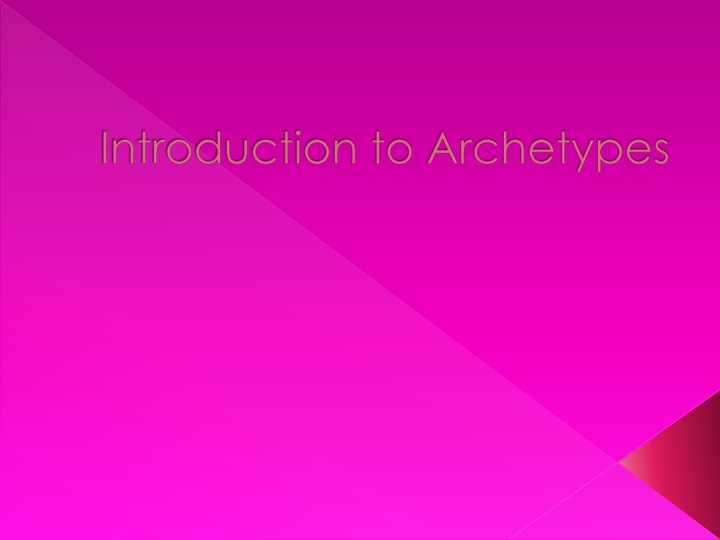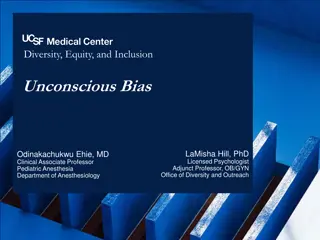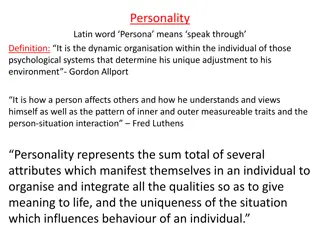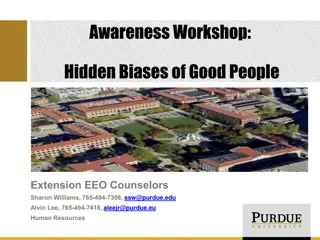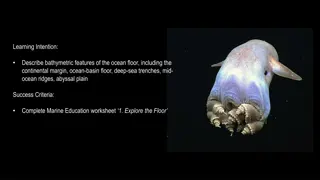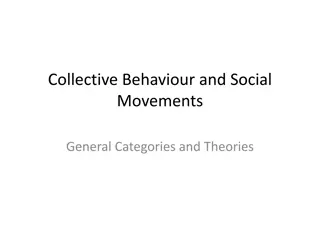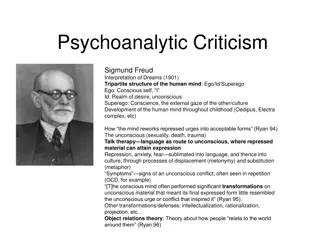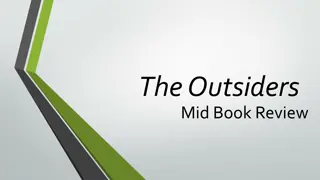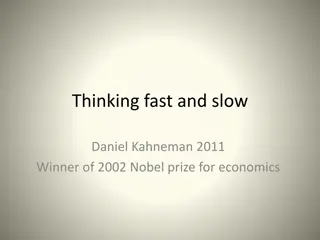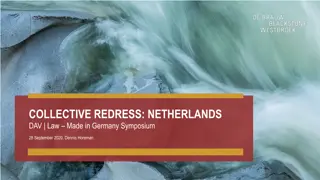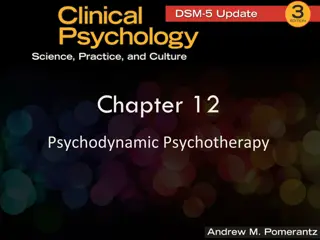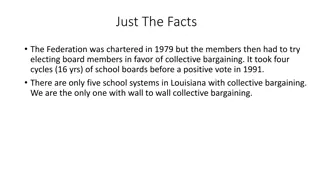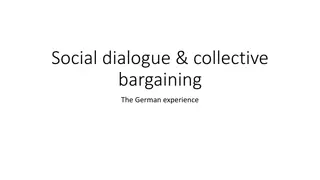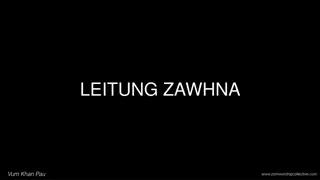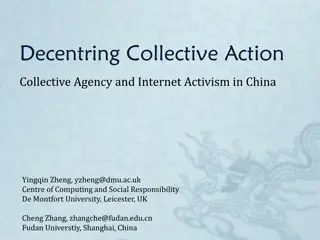Uncovering Archetypes: Dive into the Depths of Human Collective Unconscious
Explore the profound concept of archetypes, rooted in Carl Jung's theory of the collective unconscious. Discover how archetypes manifest in art, literature, and the human psyche, shaping our understanding of universal patterns and symbols that connect our past to the present.
Download Presentation

Please find below an Image/Link to download the presentation.
The content on the website is provided AS IS for your information and personal use only. It may not be sold, licensed, or shared on other websites without obtaining consent from the author.If you encounter any issues during the download, it is possible that the publisher has removed the file from their server.
You are allowed to download the files provided on this website for personal or commercial use, subject to the condition that they are used lawfully. All files are the property of their respective owners.
The content on the website is provided AS IS for your information and personal use only. It may not be sold, licensed, or shared on other websites without obtaining consent from the author.
E N D
Presentation Transcript
Collective Unconscious In studying the human psyche, Carl Jung (1875- 1961) created a theory with three parts, the third being the collective unconscious. You could call it your "psychic inheritance." It is the reservoir of our experiences as a species, a kind of knowledge we are all born with. And yet we can never be directly conscious of it. It influences all of our experiences and behaviors, most especially the emotional ones, but we only know about it indirectly, by looking at those influences.
Definition Archetype is a Greek word meaning original pattern, or model. In literature and art, an archetype is a character, an event, a story or an image that recurs in different works, in different cultures and in different periods of time. An inherited mode of thought that is defined from experience of the race and is present in unconscious minds. Recurring patterns of situation, character, or symbol existing universally and instinctively in the collective unconscious.
Characteristics of Archetypes Are not individual, but we share them with humanity. Are an inherited part of being human which connects us to past and we experience a common source. Are not directly knowable, but instead express themselves in forms (situations, symbols, and characters) Grow out of man s social, psychological, and biological being. Are universal. From gladiators to astronauts, they are the same. Cannot be explained by interaction among cultures because geography and history made it impossible. Are recurrent, appearing in slightly altered in present day situations and relate them to the past in order to get the meaning in the contemporary world
Assignment Review the literary and villain archetypes on the class page under the Evaluation Unit Choose one of the books read this year: Jane Eyre ,Things Fall Apart, In Cold Blood, The Importance of Being Earnest, Othello or Frankenstein. Next, with a partner create a power point applying the archetypes discussed to this particular piece of literature. Last, create a unified thesis that reflects the purpose of the archetypes in this particular piece of literature. IF you use outside sources, you MUST have an MLA works cited slide. Due by the end of the period Friday May 26th
Grading You will be graded on: clear and focused thesis the explanation of the functions of the archetypes in the piece of literature you selected visual appeal of the power point proper MLA citation (if applicable) originality and creativity
Extra Credit Complete this assignment for any piece of literature in the JLHS curriculum Romeo and Juliet, Of Mice and Men, Odyssey, Fahrenheit, Lord of the Flies, A Separate Peace, Brave New World, Night, To Kill a Mockingbird, Julius Caesar, Great Gatsby, Streetcar Named Desire, Farewell to Arms, Crucible, etc.
